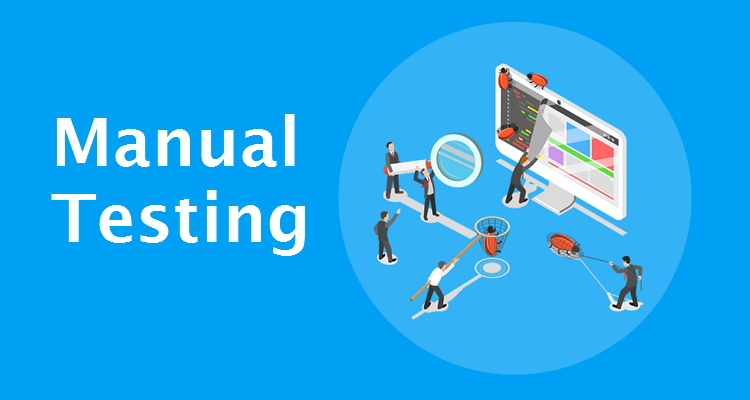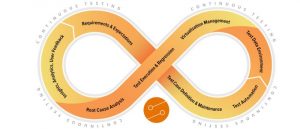Freshers always struggle to get the desired job and those who want to build their careers in IT struggle the most.
When looking for a job in IT industry it’s always better to start with software testing. While later you may switch to software development. But it’s always good to start from scratch to learn something and have a strong grip over that.
To start your career with manual testing is going to be fruitful later, because manual testing is always a first choice when it comes to testing websites. When there were no automation tools, manual testing was there. It’s the most primitive testing type that enables to find bugs in the software system.

How one can start with Manual Testing Job with zero experience?
The passion speaks
You should be clear about your passion for manual testing, first ask yourself why would you want to initiate your career as a Manual tester?
Also, this could be one of the questions you may come across during an interview. So make sure you have clear answers to the following questions:
- Why do you want to become a Manual Tester?
- IF you’re from a computer science engineering background, then why you chose Manual Testing as your profession and not Software Development?
- If you’re from some other stream, then why don’t look for a job in your own specialization field?
So keep this in mind only those who are actually passionate about this field would want to grow as a Manual Tester will end up encountering the best available jobs in the market. Being trained in this field isn’t the only thing required the prospects with a real interest will mark their name in this field.
MANUAL TESTING
Brush up all your basics of Manual Testing, this will develop your interest more. To survive in this world of Manual testing you a real interest is mandatory. Else this will become monotonous to you and you’ll start losing your performance and proficiency.

Possess the right skill set for the job
You need to be very patient if you really want to work as a Manual tester. Manual Testing requires Human intervention to execute the tests. Also manual testing requires high skilled labour, prolonged duration and may involve higher costs.
The advantage here is any type of application can be tested manually but in long run it may become boring and repetitive. So the interviewer will ensure that you have all the basic required knowledge of Manual Testing while having all the necessary skills required in the job.
You may develop your manual testing skills with the following basics:
Training Institutes
Being a fresh graduate you won’t be having a significant exposure to the Test scenarios & Test cases. This can be fixed by joining any relevant training institute offering training in manual testing.
This will give you some hand-on exposure which will be useful for you to catch hold of a manual testing job.

Strong grip over the important concepts covered under Manual Testing
Software Development Models
(i) Waterfall Model
This is the oldest of the structured SDLC methodologies and the most straightforward also. This works- finish one phase, and then move on to the next. No going back just likes its name waterfall. Each of the
Stages rely on information from the previous stages and have its own project plan. This model is easy to apprehend and simple to handle.
Things to keep in mind
As it’s a waterfall model works in a consistent flow. So any early delay can throw off the entire project timeline. And since there is little to no room for revisions once a stage is completed. So, problems can’t
Be fixed until you reach the maintenance stage. This model doesn’t function well if flexibility is needed or if the project is ongoing and long term.
(ii) V-Shaped Model
Known as Validation and Verification model and this V-shaped model sprung out of Waterfall and are identified by an equivalent testing phase for each development stage. Just like the waterfall model here
Also each stage begins only after once the previous ends.
Things to keep in mind
When there are no unknown requirements, only then this model is useful, as it’s tough to go back and make any kind of changes.
(iii) Agile Model
By dividing the products into series, this Agile Model delivers quickly a working product and considered to be a realistic development approach. Ongoing releases are produced by the model, each with small
Incremental changes made from previous release. At each renewal the product is tested.
Since the customers, developers and the tester works together throughout the respective project, so this model put emphasize on interaction. Thus, if the customer isn’t clearly directed to his/her desired
Elements, the project can go wrong. SO the nature of this model totally depends on the customer’s interaction.

What is defect management process?
Usually defect management can be defined as a process of omitting bugs and fixing them. It’s natural to encounter bugs constantly during the software development process. Hence, every project needs a process to help fix the defects.
This process of defect management is usually conducted at the stage of testing the products. The process of defect management usually involves four steps:
- The stage of defect detecting: The main goal of this is to detect all bugs in the final product or its part, irrespective of the testing type.
- Bug management process is committed to the formulation of bug reports: These are the documents that involve all necessary information about certain bugs. Usually data on the type of bug, and the possible ways of its correction are contained in them.
- Stage of bug fixing: After the bugs are fixed, they should be tested once more to make sure that the software works properly.
- Bug list is formed: This is the document that contains information about all bugs that occurred during the project’s performance. Often uses the bug list is used by the team because similar bugs’ occurrence is not rare.
Test Techniques
There are certain testing techniques that can be implemented as a part of manual testing to base our test cases better. Though there are no such hard and fast rules. Some of the techniques that can be used are as follows:
(i) Equivalence partitioning:
In this, the inputs to the application are sundered into groups that are expected to show similar behavior. The end goal is to complete the test coverage and to lessen duplication. (
ii) Boundary value analysis:
Here test data chosen lie along the data extremes. Maximum, minimum, just inside/outside boundaries, typical values, and error values are included in the boundary values. The basic logic behind this is that if one system works perfectly foe these special values then for all values in between it will work perfectly.
(iii) Decision table testing:
Test cases are designed with the combination of inputs having logical conditions. In the entry decision table. It comprises four areas called
- The condition stub,
- The condition entry,
- The action stub, and
- The action entry
Each column of the table specifying the conditions under which the actions named in the action stub will take place. Where 1 is True and 0 is false, and X is a condition that is not applicable or irrelevant.
(iv) Use case testing:
Use cases designed by the functional designers are the base of designing the test cases. In the use case, the description between the actors, users and the systems is given along with the alternate flows which assist the tester to grab all the scenes clearly and base the test cases on these. The prerequisites are mentioned clearly in this. The flow graphs are useful to apprehend the working of the system. Since the use case diagrams are designed with the customer and user participation, thus they are also useful in the acceptance testing.
Freelancing & Crowd sourced Testing
Freelancing is another way of learning and gaining the experience these days. This would be an added benefit to your experience profile. Along with this you may also do some Crowd-Source Testing for a couple of months before applying for a Manual tester job. Adding this experience in your CV will add weight to your candidature for the respective job.
Tutorials & Practice Tests
There are online Manual testing courses with e-Tutorials available if you’re time constrained. Also, there are couple of brands offering practice tests like- Vskills.
This will give you the chance to assess your skills and, if you lack in some you can brush up them and take a step forward. Because, often we feel confident enough about some of our subjects but still lack in some of the concepts. So taking practice tests helps in self-evaluation before facing the questions in the interview.
Books
Books can never go out of trend, so you can build your Manual testing skills by reading available good books on manual testing like-
Not much books are available on manual testing so the solution to this could be taking up some certification course.
Become a certified candidate: These days most of the employers look for certified candidates in every domain. Also, this has become mandatory in few firms, to make sure the prospect is productive from the day 1 of his/her job. To not waste any amount of time and money in providing training over the basic Manual testing concepts. You can enrol yourself with Vskills for Certified Manual Tester.

Bust the Myths
It’s sad that the It industry and the students have a lots of misapprehension about Manual testing jobs.
Some of the prevailing myths are:
- Anyone can do manual testing
- Testing ensures 100% Defect free products
- Automated testing is stronger than manual testing
- Testing is cakewalk
Fact: Not everyone can do the manual testing, though it’s not rocket science still it requires proper skill sets. So on your assumption please don’t judge Manual testing, as it’s not a child’s play. It’s wrong to assume that automation testing can remove 100% bugs as nothing can replace the Manual testing. Manual Testing can prove to be quite challenging as testing an application with less test cases may require high analytical skills.

Invest your time and efforts in creating a Perfect Cover Letter And Resume
Every job offered by with same profile offered by different companies never possesses same job responsibilities. So applying with the same resume every time to every vacancy will be harmful for you. And the Cover letter is something which has its own benefit. Always customize your resume and never forget to attach a cover letter. No employer is going to take the pain to evaluate you after such attempt.
Instead of applying to thousands of jobs at a stretch with the same resume, try to find good opportunities and modify your resume as per the prerequisites set by the employer. Apply to good opportunities but with all your efforts and well built resume and don’t forget to attach a cover letter along.
Point to Remember
This will automatically raise your chances if hearing back from the employers and this will put a full stop on your wait to hear the good news.
But make sure whatever is there in your resume does justice to your personality and there should not even a slightest of fake point. Because the interviewer is going to cross-question you about your presented resume. And if somewhere you go wrong this will ruin the total impression and the chances of your selection too. So read your resume thoroughly as many time as you can before your interview. Your resume is the keyhole that makes a connection between you and the interview board.

Recommendations always work
Having a few good contact can be fruitful for you as a fresher, the fastest way to grab a good opportunity is to ask your friends, family, relatives to recommend you as a fresher to available companies. As, many of the companies fill their vacancies with recommendations from their current employees, with matching skills as per the prerequisites set by the company.
This works two ways round, as the employer doesn’t have to waste his time in looking for suitable employee and the other employee gets a referral bonus too. So reach out to your contacts who are working in the related field. And ask them to refer your candidature for the new job openings in Manual testing jobs in their respective organizations.

Apply in some start-up or small organization first
It’s hard to get a job directly in some IT MNC as a fresher, so applying to start-up is always a safe option. They themselves are in their growing phase, so this leads to the need of more testers to test their products. They are willing to take the risk of hiring freshers more frequent in comparison to big firms.

Be proficient in Communication
It’s imperative to be proficient in communication irrespective of your profession. So if you aspire to become a successful manual tester make sure you have a strong grip overwritten, vocal, and reading skills. This will help you communicate your ideas and documents and explain the bugs/issues to the stakeholders efficiently.
*So, buckle up and brush your communication skills before you apply for a Manual Testing job.

Put forward your Resume
Start joining manual testing forums, social networking sites like LinkedIn, and Job portals, upload your updated Resume everywhere.
*Also upload your resume to top job portals like- Naukri.com, Shine.com, Indeed, and Monster, etc.
Other tips
Since you’re applying as a fresher so, not many expectations from you would be there. You just need to work towards your confidence, keep revising the basics, and speak flawlessly in the interview.
Present your true self
Keep your CV genuine and avoid adding any random fake thing. Make sure you know what’s there in your Resume. Read or watch interview videos about interview experience of Manual testers who have joined as a fresher in different organizations. This will give you a hint of how your interview is going to be, so you can visualize it.

Wrapping up
After doing all the needed labour, now just sit and analyze things because starting your career can never be easy. Spending hours of surfing job websites can never fetch you your dream job. You need to be specific in terms of your requirements and make yourself worthy of the available good opportunities.



